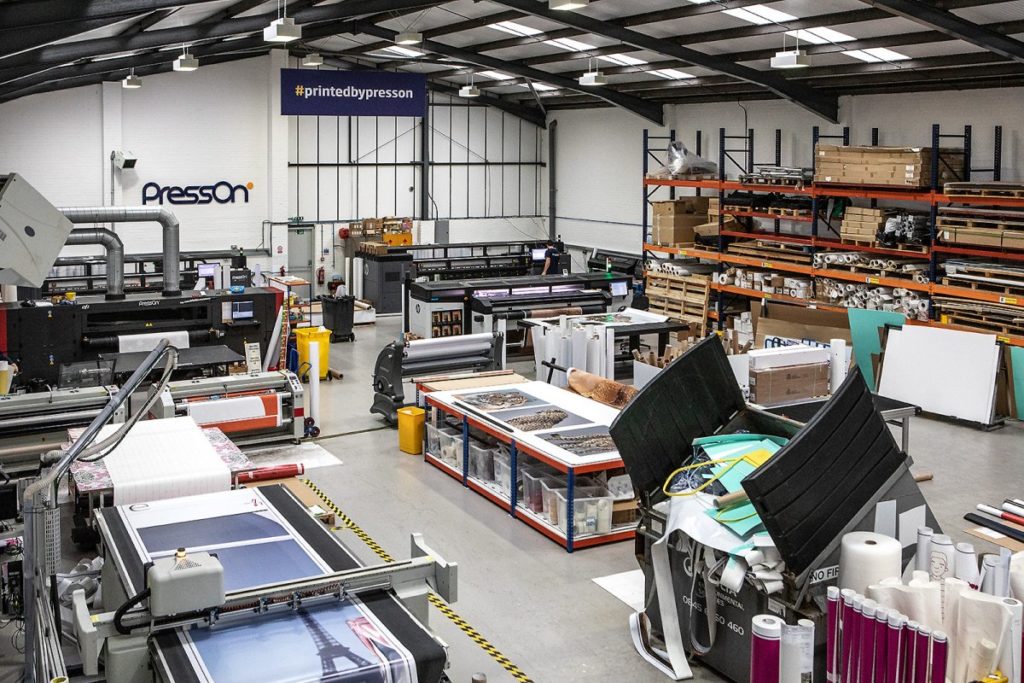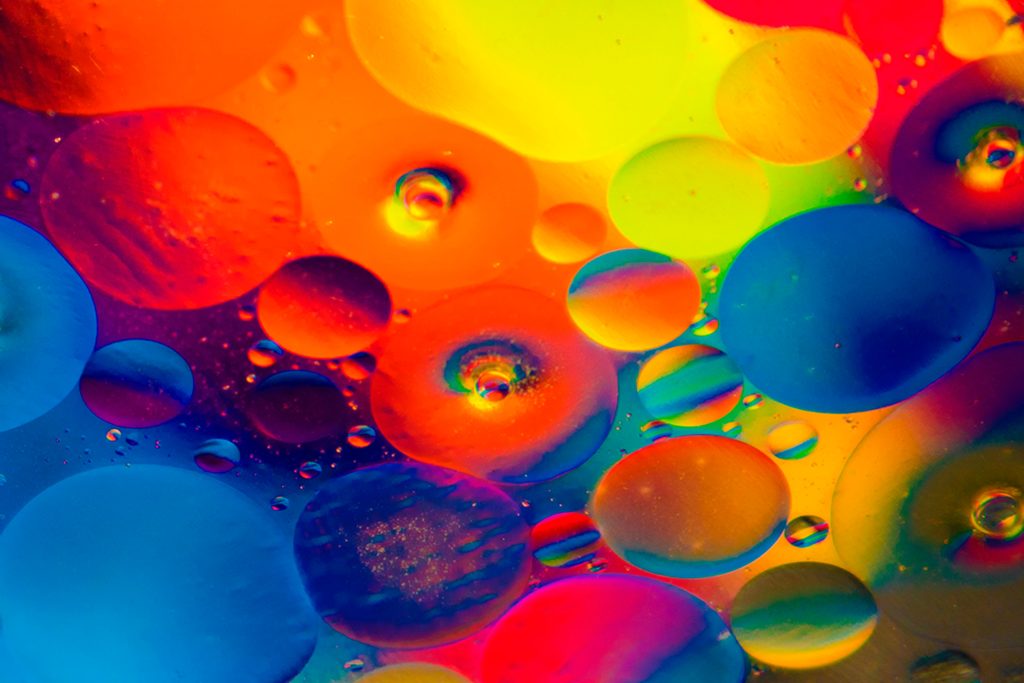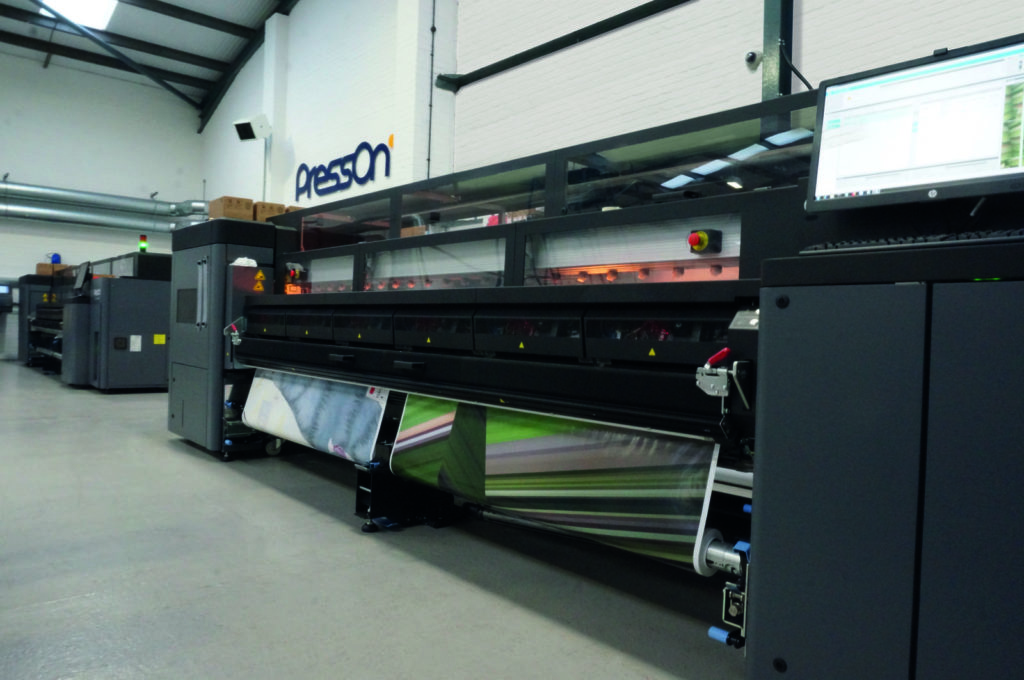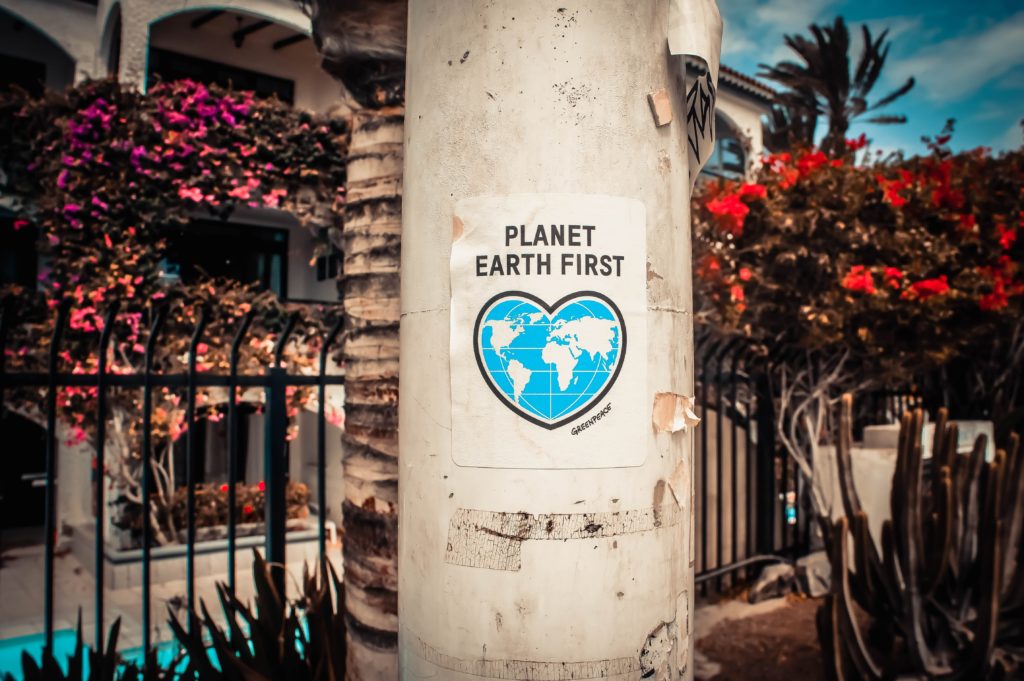Even though it is highly visible, large format print advertising isn’t always front and centre in people’s minds when it comes to environmental impact, and it has largely escaped the limelight when it comes to the debate around climate change.
But as we learn more about how much work we have left to do to reach carbon zero by 2050, companies in every industry are fast becoming aware of the impact of their print projects.
There are numerous benefits to using more eco-friendly options for your large format printing; the benefits to health by eradicating toxic components; the fact that more and more consumers are actively seeking it out or expecting it; and with more accurate printing there will be fewer costly mistakes or reprints, and lower energy output will always lead to lower costs all round.
PressOn have been pursuing low impact solutions and alternatives to ‘traditional’ print for several years. Here we have listed a few considerations to bear in mind when assessing a print provider in the context of environmental impact.
Materials for Eco-friendly Large Format Printing
We can change our impact on the environment by choosing to use ethical printing options, starting with the materials we make our prints out of. These divide into two clear groups: the substrate (the material that is printed onto) and the inks used in the process.
Even by simply swapping these two elements for lower impact alternatives, we can make huge leaps forward in the overall environmental implications of large format media.
Of course, for this to work, the latest low-impact large format printing resources need to be widely available for all, and need to perform to the high standards businesses expect. If the quality and efficiency of the work suffered, then clients would simply continue to use companies that utilise the older, less environmentally friendly options.
Fortunately, the options that are available don’t just meet many of the standards we’ve come to expect – they often exceed them.
Substrates
In the past, printing has relied heavily on working with plastic, namely PVC, as a substrate. This was down to its hard-wearing properties, especially pertinent in media placed outside and exposed to the elements.
However there are environmental challenges both in production, where harsh chemicals are needed to produce PVC, and in the disposal of said materials. The very properties that made them long-lasting also mean that they are not biodegradable. An advert for the 1998 world cup may still be around in 2098.
Soft signage is our go-to answer for many advertising briefs now, with tension fabric frames being a favourite among clients. This unique system consists of aluminium frames that can be designed in any number of configurations, and which hold fabric prints in place at tension, which can be swapped out, reused, and recycled.
This alone makes them more environmentally-friendly as they are not a single-use item. As all of the elements of a tension fabric frame are recyclable, once it has reached the end of its useful life it can be easily and sustainably disposed of.
Tension fabric frames are also extremely easy to install and take down, removing the need for experts to attend premises, and thus less energy is consumed in additional travel when graphics need to be changed or taken down.
For products where these are not suitable, there’s also recycled polyester PET products or polypropylene vinyl, which both have a much lower impact on the environment than their predecessors.
The actuality of these changes means that pretty much any print job can now be produced in a far more considerate manner: we can create taxi wraps without using PVC, floor graphics use an aluminium-based substrate, and many of our large format prints – from hanging banners to wall art in offices – are now produced on tension fabric frames, where every part of the structure is reusable and recyclable.
Inks
The history of mass production inks is not an environmentally friendly one. Not just in terms of their use, but also their disposal and their historic tendency to perform inconsistently – particularly on cheaper or less technologically innovative machinery – leading to avoidable reprints.
They were historically made with toxic solvents that created emissions which, when released, would harm the planet, both in the air and the land they could leech into. Plus the inks and their cartridges were not biodegradable, adding yet more sheer ‘stuff’ to the long list of waste that we are adding to the planet.
The creation of water-based inks started out as a way of limiting the effect toxic solvent inks had on people, both workers in the print industry and vulnerable areas where the print may appear, such as hospitals. (solvent or eco-solvent inks are pungent and can cause harm when exposed to for extended periods). Now this innovation continues by industry leaders such as HP, but with a specific focus on the environmental benefits these inks offer.
PressOn no longer uses solvent-based, UV-cured ink, instead opting for the range of water-based latex inks by HP as standard practice. These are UL ECOLOGO and Greenguard certified, plus the cartridges are made from recycled and recyclable materials – and they still deliver outstanding quality, even superior to that of their solvent-based counterparts. As well as not containing the harmful solvents, the ink itself is also biodegradable, meaning that the substrates they are printed onto can be fully recycled, without the fear of unwanted chemicals making their way into the ground or water supply.
Practice & Process
While using products that do not harm the environment is a good start, we can go further by looking at how the processes that put them to use are causing harm too.
For large format printing, the eco-friendly options for processes come down to three core areas: the energy and emissions we create in producing and delivering our products and materials, the amount of non-biodegradable waste that we produce, and the ways in which we dispose of waste material.
When considering a company in the context of eco-friendly large format printing, it is always a good idea to also check what they are doing to limit their impact on the environment by way of their production processes.
Work can be done to shorten the supply chain; sourcing materials from the same country as the company and client, where possible, to further keep the emission levels low. Plus, looking at ways to reduce the output of delivery vehicles, either by making the packages smaller, so fewer trips are needed, using electric vehicles, or by having products that do not require expert fittings or recovery.
No company can claim to offer truly low-impact solutions if they do not address the reduction of waste created and opt for better ways to dispose of waste that cannot be avoided. PressOn works with Veolia to monitor their waste, and has a strict ‘Zero Landfill’ policy, instead processing our waste for energy recovery, when recycling isn’t an option.
Technology
With technology constantly evolving, it is good to know that the focus has shifted to environmental impact, with new and innovative updates that don’t come at the detriment of the planet being developed year on year.
PressOn has always been at the forefront of these innovations, such as being the first in the world to purchase and use the HP latex 3000 printers: the first of many technological advances bourne from a collaborative partnership with HP, who are taking sustainability to another level, with a motto of “We aim to be the most sustainable and just technology company.”
You can read the HP sustainability report here, to learn more about what they are doing for eco and ethical printing, and the targets they have already met.
As with any piece of technology, printers and printing apparatus have a natural lifespan, either from use or being outdated by newer models. But this can be another opportunity to change processes for the better. As with their ink cartridges, HP also runs a take-back scheme where they will reclaim any machine at end of life ready for recycling, ensuring that a large percentage of their products don’t end up in landfill. The machines themselves are made of recycled materials and use only the water-based inks mentioned above.
As well as making the printers more eco-friendly with raw materials, their performance plays a part too: a greater level of accuracy with ever-evolving print technology negates the need for costly (both economically and environmentally) reprints and speeds up the process, lessening the energy expended with every job.
Attitudes to sustainability
By far the biggest change (and challenge) in the past decade has been the attitudes towards sustainability. Without everyone working together to create and utilise new technologies, techniques and products, the industry would not have been able to move forward. This has been driven as much by customer demand as it has by the prospect of stricter regulations being implemented in the future; that is to say, many people – both clients and print providers – now want to make real actionable changes rather than greenwash their companies.
There are also a growing number of accreditations and accolades out there, such as the Green Guard, to separate those making real-life changes and those simply paying lip service to the plight of impending global climate disaster.
That is not to say that there isn’t still a long way to go. You can rely on PressOn to not only keep producing large format printing to the absolute highest quality, but to do it in the most environmentally considerate way possible, and with one eye always on what is coming next in the world of eco-friendly printing.







